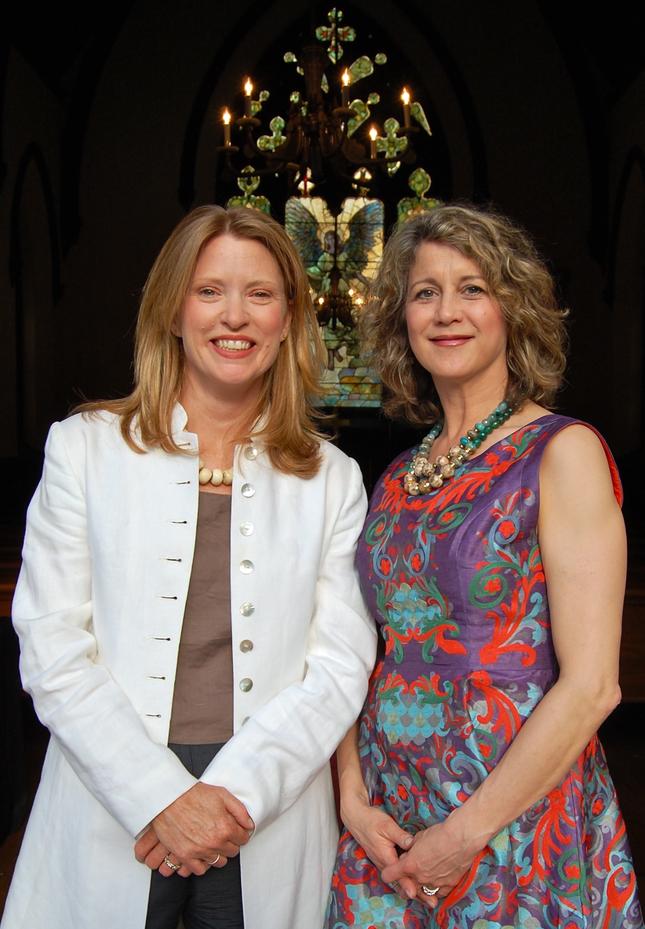84th Georgetown House Tour
By • April 28, 2015 0 2015

This year’s Georgetown House Tour offers a wide range of residences in Washington’s oldest neighborhood. A star on the tour is at 35th and Prospect Streets: Quality Hill-Worthington House, built in 1798. Sen. Clairborne Pell, D-R.I., and his wife Nuala lived there from the 1960s to about 10 years ago. As with the other places on the tour, what a story this house with its occupants in mind could tell, besides the lesson in architecture and design. Books, such as “The Georgetown Set,” “Aspects of Georgetown” or even the novel, “Prospect Street,” can add to the conversation. Your chance to hear such whispers by the windows comes this Saturday.
With spring in full bloom, Georgetown has never looked better. Every year, the neighborhood charms locals and visitors alike with its historic buildings and distinct panache. The streets are famously colored with homes in every hue, from lavender to canary yellow – and classic red brick – but this diversity extends well beyond the playful color palette.
A closer inspection of Georgetown homes reveals the range of architectural styles that have influenced the neighborhood over the course of its rich history. The Georgetown House Tour, which celebrates its 84th anniversary this year, is a unique opportunity for people to go back in time and witness this stylistic diversity firsthand.
This year, the tour includes ten stops, each with its own architectural flair. Clues to each home’s time period and style can be found in many different places, from the design of the roof to the amount of cornice ornamentation.
“There’s really something charming and magical about being able to go into all these old homes in one day,” said the Rev. Gini Gerbasi, the new rector at St. John’s Church, which hosts the tour.
When Georgetown was founded in 1751, Georgian design was the ubiquitous architectural style. Up until the Revolutionary War, homes were classically designed, with square or rectangular facades and symmetrically spaced windows. Front doors were paneled and accompanied by decorative pilasters and a transom light. This year, the first stop on the tour is the Quality Hill mansion, built in classic Georgian style, with a storied history to match.
Federal architecture followed, influenced by the lines of its Georgian predecessor. Most homes were two to three stories tall, with box-shaped, symmetrical exteriors, yet there were several distinguishing modifications.
Larger panes of glass were used in the windows and louvered shutters were introduced. Front doors became more expressive, with semicircular or elliptical fanlights and narrow side lights. Entry porticos or porches were commonly added, as were three-part Palladian windows, generally on the second story above the entrance.
Throughout the 19th and 20th centuries, Washingtonians welcomed new architectural ideas and embraced worldly influences. One example of this is the Italianate style, a departure from classicism and an acceptance of artistic freedom. Italianate homes have a sense of romantic lavishness to them, with their elaborate moldings, overhanging eaves and high stoops. Stop #5 on the tour is a fitting example, with its rich ornamentation, including detailed cornice brackets and lintels.
Stop #7 is the Renwick Chapel at Georgetown’s famed Oak Hill Cemetery. Notice the gates and the gatehouse, which are Italianate in style, while the chapel design is Gothic Revival. The Gothic Revival style came about in the mid 19th century as designers became increasingly influenced by medieval motifs and themes. Inside the chapel, visitors will notice the pointed arches, steeply pitched roof, gilded decorative plaster ceiling bosses and stunning Gothic windows.
By the 1880s, many architectural elements of the Georgian era were being embraced and revitalized in a style appropriately known as Colonial Revival. This was a conscious return to American’s past architectural heritage and colonial beginnings.
Gerbasi loves the neighborhood’s rich history and is particularly drawn to St. John’s roots, which go back more than 200 years. The world has changed around it over the decades, but the church’s mission of serving the neighborhood has remained constant. Every year, the house tour helps the church maintain its historic building and supports its aid to communities inside and outside the parish.
“St. John’s is a de facto community center,” said Barbara Wolf, co-chair of the House Tour. Among the nonprofit community service organizations – with a focus on homelessness, education, workplace development and seniors – that the Georgetown House Tour helps provide for are the Georgetown Ministry Center, Bright Beginnings, Jubilee Jobs and the DC Volunteer Lawyers Project.
The 2015 Georgetown House Tour, on Saturday, April 25, is sponsored by TTR Sotheby’s International Realty, Beasley Real Estate, Christie’s Long & Foster, Doyle New York and Farrow & Ball.
Locations of the properties listed in the Georgetown House Tour book. Tickets are available online for $50 and at St. John’s for $55. GeorgtownHouseTour.com

